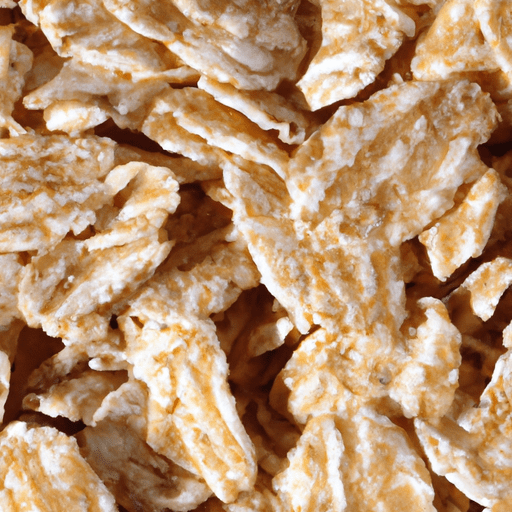The Versatile Wonder: Barley Flakes
If the words wholesome, nutritious, and versatile resonate with you, then you’re in for a treat. Today, we’re diving into the world of barley flakes – a true gem in the pantry for both seasoned chefs and aspiring cooks alike. Join us as we explore the delightful taste, various uses, nutritional benefits, and the fascinating history behind this remarkable ingredient.
Taste
Barley flakes are made by simply steaming, rolling, and drying hulled barley grains, resulting in flattened flakes that bear a similar resemblance to oats. When cooked, these flakes have a chewy texture with a slightly nutty flavor. They add a delightful earthiness and depth of flavor to any dish they’re incorporated into.
Common Uses in Cooking
Barley flakes are an incredibly versatile ingredient, embracing both sweet and savory recipes. Here are some delightful ways to incorporate these flakes into your cooking repertoire:
1. Breakfast Cereal
Start your day off right with a wholesome bowl of barley flakes, just like you would with oatmeal. Cook the flakes in milk or water until creamy and then sweeten them to your liking. Top it off with fresh fruits, nuts, or a drizzle of honey for a delightful and nutritious breakfast.
2. Soups and Stews
Barley flakes lend themselves beautifully to hearty soups and stews. They release a pleasant richness while providing an exceptional texture. Use them as a substitute for rice or noodles in recipes like beef barley soup or vegetable stew, and let their comforting qualities shine.
3. Baked Goods
Upgrade your favorite baked goods by incorporating barley flakes into your recipes. From cookies to muffins, these flakes add a delightful crunch and subtle nuttiness, making every bite extraordinary.
4. Side Dishes
Barley flakes make a delectable side dish option. Whether you prepare them as a pilaf, risotto-like dish, or a flavorful salad, they bring a unique twist to your meal. Enhance the dish with herbs, vegetables, and other complementary flavors for a delightful culinary experience.
Nutritional Value
Beyond their versatility and taste, barley flakes pack a nutritional punch. They are an excellent source of essential vitamins and minerals that contribute to our overall well-being. Here are a few key benefits:
Fiber-Rich: Barley flakes are an outstanding source of dietary fiber, promoting healthy digestion and aiding in weight management.
Heart-Healthy: They contain beta-glucan, a soluble fiber known for its cholesterol-lowering properties, which can help reduce the risk of heart disease.
Vitamin Powerhouse: Barley flakes contain an array of vitamins, including niacin, thiamin, and vitamin E, which support a healthy immune system and promote cell function.
Mineral Boost: They are rich in minerals like manganese, selenium, and phosphorus, which play important roles in bone health, metabolism, and energy production.
Interesting Facts and History
Barley, one of the world’s oldest cultivated grains, dates back thousands of years. It served as a staple food in ancient civilizations like the Egyptians, Greeks, and Romans. Barley flakes were developed as a convenient way to enjoy this grain’s nutritional benefits while harnessing its unique flavor and texture.
Historically, barley was widely recognized for its ability to withstand harsh climates and its high nutritional value. In fact, some ancient cultures even believed consuming barley would boost strength and endurance.
Today, barley flakes continue to captivate the culinary world due to their rich heritage and versatility. They offer a healthy alternative to other cereals and grains while elevating the taste profile of various dishes.
In Conclusion
Barley flakes are truly a versatile wonder, satisfying both taste buds and nutritional needs. Whether you’re looking to start your day with a nourishing breakfast or enhance your dinner with a hearty side dish, these flakes have got you covered. Delight in their subtle nutty flavor, explore their countless cooking possibilities, and reap the benefits of their exceptional nutritional value. Embrace the charm of barley flakes and let them take your culinary adventures to new heights.
Barley Flakes
Origin: Barley is one of the oldest cultivated grains and has been grown for thousands of years. It is believed to have originated in the Fertile Crescent of the Middle East.
Common Uses: Barley flakes are made by steaming and rolling hulled barley grains. They are often used in hot breakfast cereals, similar to oatmeal, and can also be used in baking, as a substitute for oats or other grains in recipes like cookies, bread, and granola bars. Barley flakes are versatile and can also be added to soups, stews, and salads for added texture and nutritional benefits.
Nutritional Benefits: Barley flakes are rich in dietary fiber, vitamins, and minerals. They are a good source of complex carbohydrates, which provide energy and help maintain blood sugar levels. Barley flakes are also relatively high in protein compared to other grains, making them a good addition to a balanced diet. Additionally, they contain vitamins such as niacin, riboflavin, and thiamin, as well as minerals like manganese, phosphorus, and selenium.
Unique Properties: Barley flakes have a slightly nutty flavor and a chewy texture. They cook relatively quickly, usually within 10 to 15 minutes, making them a convenient option for a quick and nutritious meal. In addition to being a versatile ingredient, barley flakes have a naturally high fiber content, which contributes to improved digestion and may help with controlling cholesterol and maintaining a healthy weight.
Historical Significance: Barley has an extensive history across various civilizations. It was widely cultivated in ancient civilizations such as Sumeria, Egypt, Greece, and Rome. It was used to make bread, porridge, and even brewed into beer. Barley’s historical significance is also reflected in cultural associations and traditional rituals. For example, in Scotland, barley was used in the brewing of whisky, and in Iran, it is used during the celebration of the Persian New Year (Norooz) as a symbolic element representing new life.




Use the share button below if you liked it.
It makes me smile, when I see it.